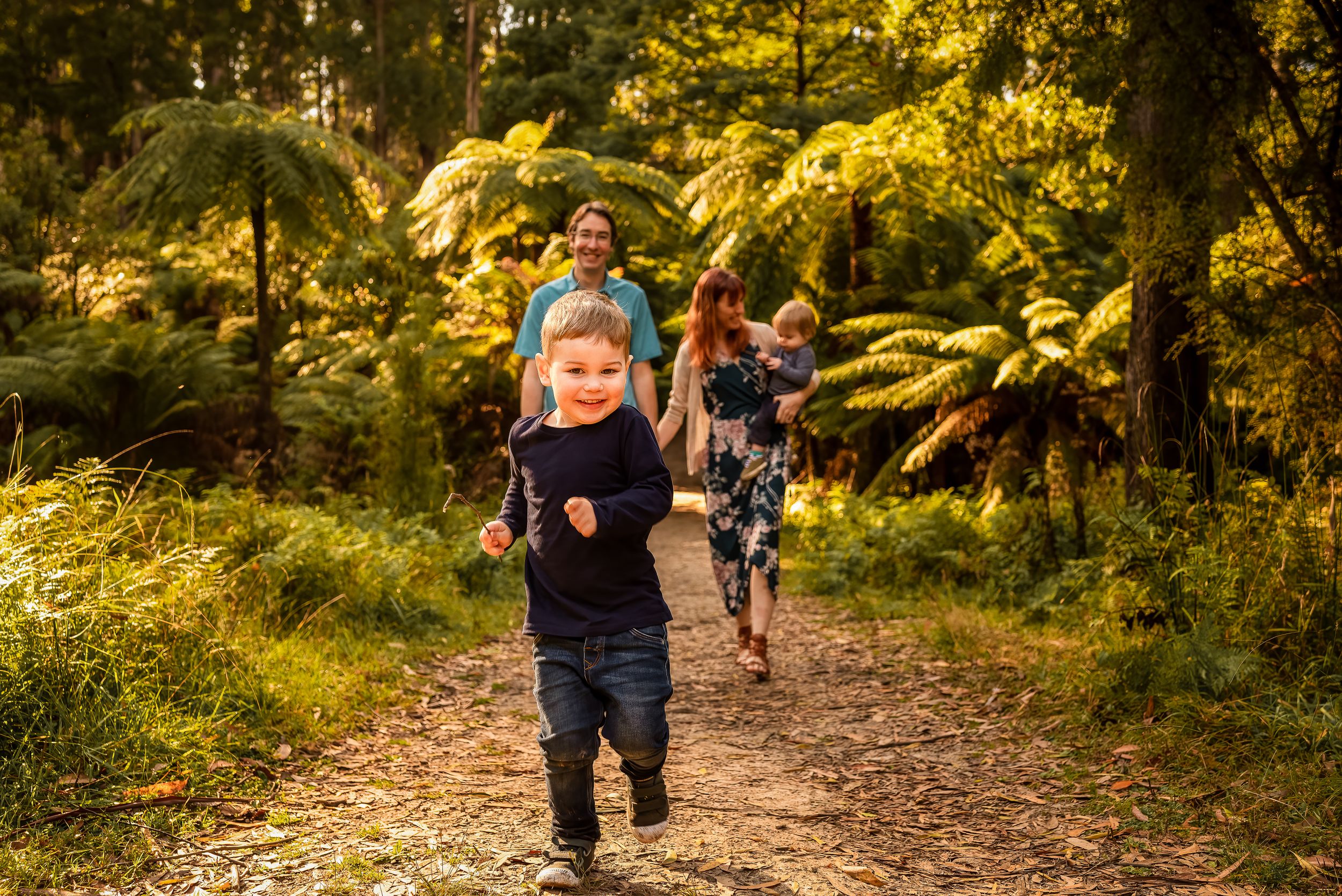
MY CAMERA SETTINGS WHEN I WANT TO FREEZE MOVEMENT WHEN PHOTOGRAPHING FAMILIES, COUPLES OR INDIVIDUALS
My business tagline is “Play. Move. Explore.” so it is probably no surprise that my sessions are fairly active, whether they involve one subject, a couple, a small family or an extended family group.
Photographing moving subjects means I need to make multiple adjustments to my settings throughout a session to ensure I freeze the moment and get a nice, sharp image. The ability to quickly calculate, adjust and balance settings to get a correctly exposed image is one of the biggest challenges for those starting out in photography so I am going to share some of my experience and thought processes to help you along the way if you too want to learn how to freeze movement.
When photographing a small group of subjects on a single focal plane who are still and either standing, sitting or crouching I normally shoot at F 2.8-F 3.5 with a shutter speed of at least 1/250 second and whatever ISO is required to correctly expose the scene. If it is an individual I may go as wide open as my lens allows which in the case of my 35mm is F 1.8. When photographing bigger groups or when the subjects are on multiple focal planes the F stop needs to be increased, unless of course I am seeking to deliberately blur out some individuals in the image.



Once I move to walking shots – whether that be towards or away from the camera I up my shutter speed to at least 1/400 second and leave the aperture as is as the subjects typically walk side by side and thus remain more or less on the same focal plane.
Dancing and aeroplaning small children, or if I want to freeze long hair flying around, sees me move to around F 5.6 and a shutter speed of 1/800 second. These adjustments require the ISO to be increased to compensate for the reduction in light as the lens is more closed combined with the shutter opening for a shorter period of time.
For shots with dynamic movement such as jumping, running, throwing toddlers in the air or spinning in a circle I typically shoot at F 8 with a minimum shutter speed of 1/1000 and shoot in continuous burst mode with back button focus to ensure I get just the shot. Once I’ve shot the dynamic movement with these “safe settings” I will often shoot the sequence again with a lower aperture (and don’t forget to adjust your ISO to balance the exposure) to try and get background blur, safe in the knowledge that if I miss it I already have the shots at F8.
Being able to freeze movement takes some practice but learning to do so is a lot of fun and well worth the mental arithmetic required. For me it is my answer to sudoku or crossword puzzles and helps (hopefully!) to keep my mind sharp.


COMMENTS